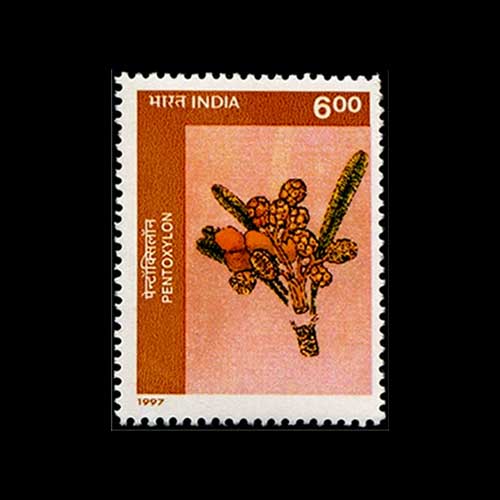Science and Technology on Indian Postage Stamps-3
2025-11-06 Thu
The next #stamp in the series issued by #India #post on 11 #September 1997 commemorates the 50th anniversary of the #birbal Sahni Institute of Palaeosciences (BSIP). This stamp features a reconstruction of the extinct plant Pentoxylon, which belongs to the #family Pentoxyleae. Pentoxylon takes its name from the five wedges of #wood that characterize its stem. The design includes #leaves, stems, and #Flowers based on fossils collected from Nipania in the Dumka District of the Rajmahal Hills in #Jharkhand, which date back approximately 110-114 million years.According to G Rajagopalan in the Journal of the Geological Society of India (1997) this #Discovery represents a significant contribution by #professor Birbal Sahni to the study of Mesozoic plants. In 1948, he introduced an entirely new group of extinct plants, and this publication stands as his last work, remaining the most important and comprehensive examination of Pentoxylales to date. The reconstructed plant includes a stem designated as Pentoxylon Srivastava, leaves referred to as Nipaniophyllum Sahnii, and a female seed-bearing organ known as Carnoconites Srivastava. Additionally, the male flower, Sahnia nipaniensis, was discovered by palaeobotanist Vishnu Mittre in 1953.
Fun #Fact: The reconstructed plant is used as the #seal of the BSIP, #Lucknow (#UttarPradesh). T G Halle, a #Swedish palaeobotanist and geologist, wrote in Palaeobotanist (1952) that the investigation of Pentoxyleae reached a pivotal stage in relation to Sahni's final palaeobotanical publication. Consequently, it was determined that a design based on his reconstructions of Pentoxylon would be an appropriate choice for the institute's seal.
For further information regarding previous issues, please refer to :
Science and Technology on Indian Postage Stamps-1
Science and Technology on Indian Postage Stamps-2
Latest News
-
Science and Technology on Indian Postage Stamps-2
2025-11-05 WedIn continuation of the stamp series issued by India Post on 11 September 1997, to celebrate the 50th...
-
Science and Technology on Indian Postage Stamps-1
2025-11-05 WedPalaeobotany is the scientific discipline dedicated to the study of fossilized plants and their hist...
-
Copper Double Falus of Malwa Sultan Ghiyath Shah
2025-11-05 WedMalwa Sultan Ghiyath Shah issued copper coins in two different weight standards: 80 rati series and ...
-
Malwa Sultan Ghiyath Shah's Silver One-Eighth Tanka
2025-11-03 MonGhiyath Shah was the ruler of the Malwa Sultanate. The son of Mahmud Khalji I, he had already govern...
-
Malwa Sultan Ghiyath Shah Silver Coinage
2025-10-31 FriMalwa Sultan Ghiyath Shah issued two types of silver coin varieties: special issues and normal issue...

